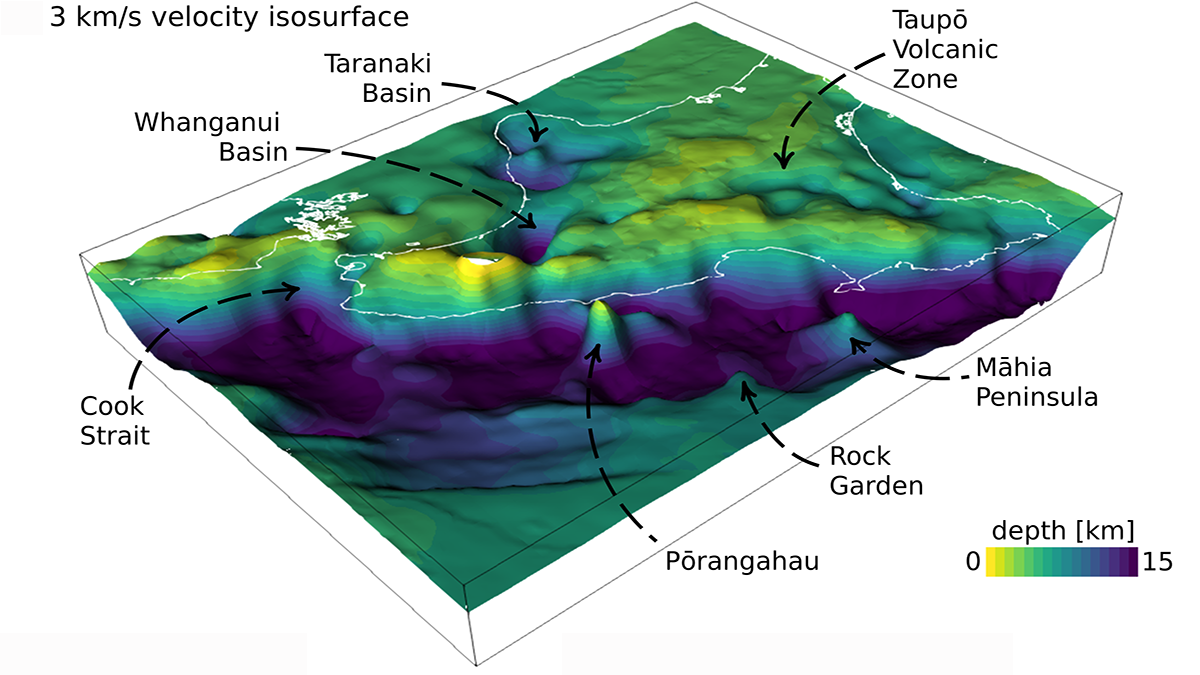Editors’ Highlights are summaries of recent papers by AGU’s journal editors.
Source: Journal of Geophysical Research: Solid Earth
The locked-to-creeping transition in seismic coupling northward along New Zealand’s Hikurangi margin has long puzzled geoscientists.
In a new study, Chow et al. [2022] employ a sophisticated waveform inversion method along with data from plentiful regional earthquakes to image structure along the margin to depths of 30 kilometers in unprecedented detail. The images point to bathymetric structures that mirror those observed in analog sand table experiments and suggest that progressive subduction of seamounts weakens the upper plate.
This weakening in turn renders the plate boundary less capable of storing elastic strain, and so provides an explanation for the curious transition in coupling and observations of segmentation in slow slip earthquakes.
Citation: Chow, B., Kaneko, Y., & Townend, J. (2022). Evidence for deeply subducted lower-plate seamounts at the Hikurangi subduction margin: Implications for seismic and aseismic behavior. Journal of Geophysical Research: Solid Earth, 127, e2021JB022866. https://doi.org/10.1029/2021JB022866
—Michael Bostock, Editor, Journal of Geophysical Research: Solid Earth

